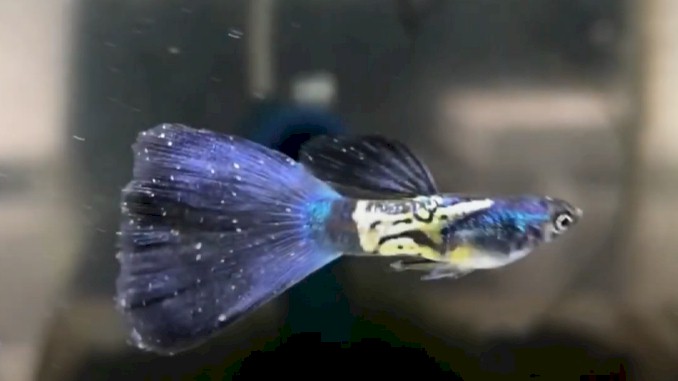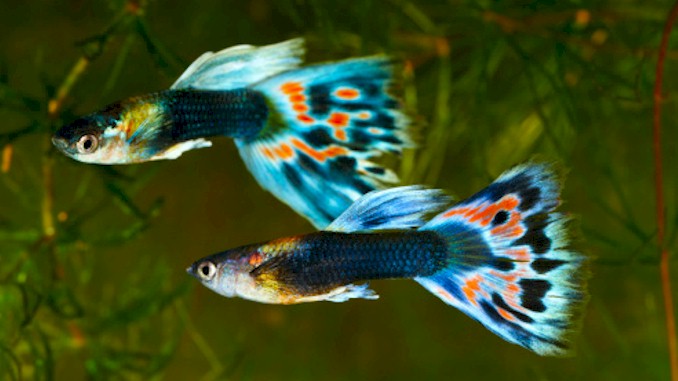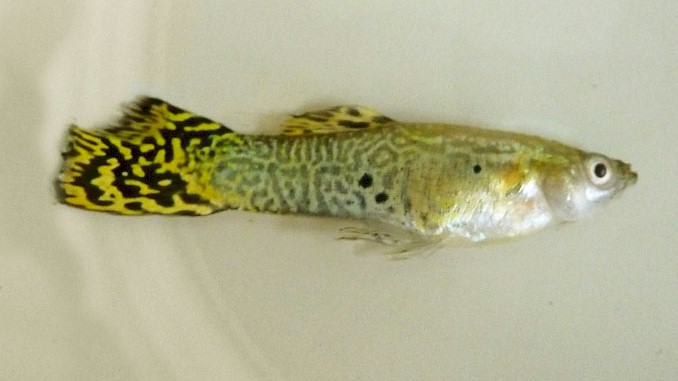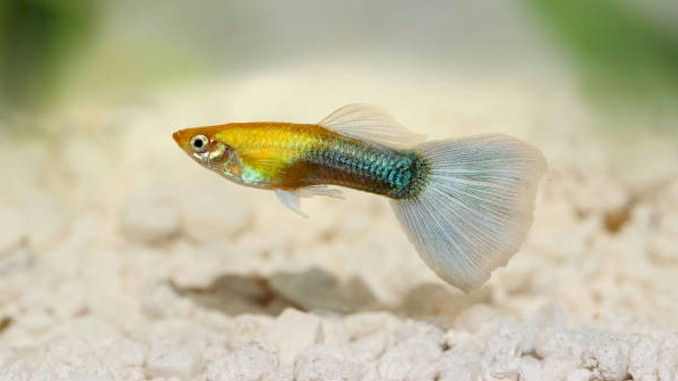Guppy White Spot Survival Guide
Guppy white spot or Ich is the most common disease that will happen on guppies and other fish in aquarium, this situation is the one almost all guppies owners will run into. As a guppy enthusiast with over ten years of experience in breeding and raising thousands of guppies, I have dealt with this disease many times. In this article, I will share with you the information and knowledge of what causes guppy white spot, how to treat it effectively and how to prevent it from happening again.
Guppy white spot, also known as ich or Ichthyophthirius multifiliis, is a common and contagious disease. It is caused by a parasite that burrows into the skin of the fish and creates white cysts that look like grains of salt. The treatments include using chemicals, salt or heat.
Now that you know what causes guppy white spot and how to treat it effectively, you might be wondering how to recognize the signs of this disease and how to diagnose it accurately. You might also be curious about the life cycle of the parasite and how it spreads from one fish to another. In the next sections, I will answer these questions and more. I will also share some tips and tricks on how to prevent guppy white spot from recurring and how to keep your guppies healthy and happy. So, don’t stop reading now. You are about to learn some valuable information that will help you take care of your guppies like a pro.
What is guppy white spot and why should you care?
If you are a guppy lover like me, you probably enjoy watching your colorful and lively fish swim around in your tank. Guppies are one of the most popular and easy-to-keep aquarium fish in the world. They come in a variety of shapes, sizes and colors, and they can breed very quickly. However, guppies are not immune to diseases and parasites that can affect their health and appearance. One of the most common and dangerous diseases that can infect guppies is called guppy white spot.
Guppy white spot, also known as ich or Ichthyophthirius multifiliis, is a parasitic disease that affects the skin and gills of guppies and other freshwater fish. It is caused by a ciliated protozoan that attaches itself to the fish and feeds on its tissues. The parasite forms white cysts that look like grains of salt on the fish’s body, hence the name white spot. The disease can cause itching, irritation, loss of appetite, breathing difficulties and even death if not treated promptly.
You should care about guppy white spot because it is highly contagious and can spread rapidly throughout your tank if left unchecked. It can infect any fish that shares water with an infected fish, regardless of species or size. It can also survive for several days without a host, making it hard to eradicate completely. Guppy white spot can ruin your beautiful tank and cause you a lot of stress and frustration.
Fortunately, there are ways to prevent and treat guppy white spot effectively.
What causes guppy white spot and how does it infect your fish?
As I mentioned before, guppy white spot is caused by a ciliated protozoan called Ichthyophthirius multifiliis, or ich for short. This parasite is very common and can be found in most freshwater environments. It can infect any fish that shares water with an infected fish, regardless of species or size. It can also survive for several days without a host, making it hard to eradicate completely.
But how does this parasite infect your guppies? Well, it has a complex life cycle that involves three stages: trophonts, tomonts and theronts. Let me explain each stage briefly:
- Trophonts: These are the adult parasites that attach themselves to the skin and gills of your guppies. They burrow into the tissues and feed on the blood and fluids of your fish. They also cause inflammation and irritation that leads to the formation of white cysts on the surface of your fish. These cysts are visible to the naked eye and are the main symptom of guppy white spot. The trophonts stay on your fish for several days until they are fully matured.
- Tomonts: These are the parasites that detach themselves from your fish and fall to the bottom of the tank. They encyst themselves in a protective capsule and start dividing into hundreds of new parasites called tomites. This process can take anywhere from a few hours to a few days, depending on the water temperature and conditions. The warmer and dirtier the water, the faster they multiply.
- Theronts: These are the free-swimming parasites that emerge from the capsules after they have split into many tomites. They swim around in search of new hosts to infect. They have a limited lifespan outside a host, so they need to find one quickly or they will die. If they manage to find a suitable host, they penetrate its skin and become trophonts again.
As you can see, this parasite has a very efficient way of reproducing and spreading itself throughout your tank. It can infect many fish in a short period of time if left untreated.
But what makes your guppies more vulnerable to this parasite? Well, there are several factors that can weaken their immune system and make them more susceptible to infection. Some of these factors are:
- Stress: Stress is one of the main causes of disease in any living creature, including guppies. Stress can be caused by many things such as poor water quality, overcrowding, incompatible tank mates, sudden changes in temperature or pH, lack of hiding places or plants etc. Stress lowers your guppies’ resistance to disease and makes them more prone to infection by parasites like ich.
- Poor water quality: Poor water quality is another major cause of stress and disease in guppies. Water quality refers to various parameters such as ammonia, nitrite, nitrate, pH etc., which affect how healthy your water is for your fish. If these parameters are not within optimal ranges for your guppies (see below), they can cause harm to their health and well-being.
- Ammonia: Ammonia is a toxic substance that is produced by fish waste decomposition bacteria present in every aquarium filter media . Ammonia levels should always be zero ppm (parts per million) for any aquarium containing live animals . High levels of ammonia can burn your guppies’ skin.
- Nitrite: Nitrite is another toxic substance that is produced by nitrifying bacteria present in every aquarium filter media. Nitrite levels should also be zero ppm for any aquarium containing live animals. High levels of nitrite can damage your guppies’ gills and prevent them from breathing properly.
- Nitrate: Nitrate is the final product of the nitrogen cycle that occurs in every aquarium filter media. Nitrate levels should be below 20 ppm for any aquarium containing live animals. High levels of nitrate can cause algae growth and lower the oxygen levels in your water.
- pH: pH is a measure of how acidic or alkaline your water is. pH levels should be between 6.8 and 7.8 for guppies, depending on their origin and preference. Sudden changes in pH can shock your guppies and make them more vulnerable to disease.
- Temperature: Temperature is another important factor that affects your guppies’ health and well-being. Temperature should be between 72°F and 82°F for guppies, depending on their origin and preference. Sudden changes in temperature can also shock your guppies and make them more vulnerable to disease.
To maintain good water quality, you should do regular water changes (at least 25% every week) and test your water parameters frequently (at least once a month). You should also use a good filter media that can handle the bioload of your tank and remove any uneaten food or debris from the bottom of your tank.
How to treat guppy white spot effectively and safely?
If you have noticed white spots on your guppies, you should act quickly and treat them as soon as possible. Guppy white spot can be fatal if left untreated, so don’t delay. There are different methods to treat guppy white spot, depending on your preference and availability of resources. Some of these methods are:
- Chemical treatment: This is the most common and effective way to treat guppy white spot. There are various medications available in pet stores or online that can kill the parasite and cure your fish. Some of these medications are malachite green, formalin, methylene blue, copper sulfate etc. You should follow the instructions on the label carefully and dose your tank accordingly. You may need to repeat the treatment for several days until all the parasites are gone. You should also remove any activated carbon from your filter during the treatment as it can reduce the effectiveness of the medication.
- Salt and heat method: This is a natural and inexpensive way to treat guppy white spot. Salt can dehydrate and kill the parasite while heat can speed up its life cycle and make it easier to eliminate. You should add 1 teaspoon of aquarium salt (not table salt) per gallon of water in your tank and slowly raise the temperature to 86°F. You should keep these levels for at least four days or until all the spots disappear. You should also monitor your fish closely for any signs of stress or discomfort as some fish may not tolerate high salinity or temperature well.
- Quarantine method: This is a preventive measure that can help you avoid infecting your whole tank with guppy white spot. If you notice any new fish with white spots, you should isolate them immediately in a separate tank or container with clean water. You should then treat them with either chemical or salt and heat method until they are cured. You should also disinfect any equipment that came in contact with them such as nets, buckets etc., before using them again in your main tank.
Whichever method you choose to treat guppy white spot, you should always do a large water change (at least 50%) after the treatment is over to remove any traces of medication or salt from your water. You should also test your water parameters frequently (at least once a week) to make sure they are within optimal ranges for your guppies (see below). By doing this, you can ensure that your fish recover fully from this disease and prevent any future outbreaks.
How to recognize the signs of guppy white spot and how to confirm the diagnosis?
The most obvious sign of guppy white spot is the presence of small to large white spots on your fish’s body, fins and tail. These spots are actually cysts caused by the parasite burrowing into your fish’s skin. They may look like grains of salt or sugar sprinkled on your fish.
However, not all white spots on your guppies are necessarily caused by ich. There are other possible causes such as fungal infections, bacterial infections or injuries2. Therefore, you need to look for other signs and symptoms that can help you confirm the diagnosis of guppy white spot. Some of these signs and symptoms are:
- Rubbing against rocks or gravel: Your guppies may try to scratch themselves against hard surfaces in your tank to relieve the itching and irritation caused by the parasite. This can also damage their skin and make them more prone to secondary infections.
- Loss of appetite: Your guppies may lose interest in food due to the discomfort and stress caused by the parasite. This can lead to weight loss and malnutrition if not addressed quickly.
- Breathing difficulties: Your guppies may have trouble breathing due to the parasite affecting their gills. You may notice them gasping at the surface or opening their mouths wide. This can also reduce their oxygen intake and affect their metabolism.
- Lethargy: Your guppies may become less active and swim less due to the parasite draining their energy. They may also hide more often or stay at the bottom of your tank. This can affect their social behavior and mood.
- Clamped fins: Your guppies may hold their fins close to their body due to stress or pain caused by the parasite. This can also make them less agile and more vulnerable to predators.
If you notice any of these signs or symptoms along with white spots on your guppies, you can be fairly certain that they have guppy white spot. However, if you want a more definitive diagnosis, you can use a microscope or a magnifying glass to examine a skin scraping from one of your infected fish. You should be able to see tiny moving dots that are actually theronts swimming around. These are unmistakable signs of ich infection.
How does the parasite that causes guppy white spot reproduce and spread from one fish to another?
As I explained before, the parasite that causes guppy white spot has a complex life cycle that involves three stages: trophonts, tomonts and theronts. Each stage has a different role in the reproduction and transmission of the parasite. Let me summarize each stage briefly:
- Trophonts: These are the adult parasites that attach themselves to your guppies’ skin and gills. They burrow into the tissues and feed on your fish’s blood and fluids. They also cause inflammation and irritation that leads to the formation of white cysts on your fish’s body. These cysts are visible to the naked eye and are the main symptom of guppy white spot. The trophonts stay on your fish for several days until they are fully matured.
- Tomonts: These are the parasites that detach themselves from your fish and fall to the bottom of your tank. They encyst themselves in a protective capsule and start dividing into hundreds of new parasites called tomites. This process can take anywhere from a few hours to a few days, depending on the water temperature and conditions. The warmer and dirtier the water, the faster they multiply.
- Theronts: These are the free-swimming parasites that emerge from their capsules after they have split into many tomites. They swim around in search of new hosts to infect. They have a limited lifespan outside a host, so they need to find one quickly or they will die. If they manage to find a suitable host, they penetrate its skin and become trophonts again.
This life cycle allows the parasite to reproduce rapidly and spread throughout your tank if left untreated. It can infect any fish that shares water with an infected fish, regardless of species or size. It can also survive for several days without a host, making it hard to eradicate completely.
The best way to prevent this parasite from spreading is by treating your whole tank as soon as you notice any signs of infection. You should also quarantine any new fish, plants or invertebrates before adding them to your main tank. You should also maintain good water quality by doing regular water changes and testing your water parameters (see below). By doing this, you can protect your guppies from this common but dangerous disease.
How to prevent guppy white spot from happening again and how to keep your guppies healthy and happy?
Now that you know how to treat guppy white spot effectively and safely, you might be wondering how to prevent it from happening again. After all, prevention is always better than cure. There are some simple steps that you can take to protect your guppies from this disease and keep them healthy and happy. Here are some tips that I follow religiously:
- Quarantine new fish: Whenever you buy or receive new fish, plants or invertebrates for your tank, you should quarantine them for at least two weeks before adding them to your main tank. This is to make sure that they don’t have any diseases or parasites that could infect your other fish. You should also inspect them visually for any signs of illness or injury. You should keep them in a separate tank or container with clean water and a heater. You should also feed them well and monitor their behavior closely.
- Maintain good water quality: As I mentioned before, poor water quality is one of the main causes of stress and disease in guppies. You should always keep your water parameters within optimal ranges for your guppies (see below). You should also do regular water changes (at least 25% every week) and test your water parameters frequently (at least once a month). You should also use a good filter media that can handle the bioload of your tank and remove any uneaten food or debris from the bottom of your tank.
- Avoid overcrowding: Overcrowding can cause stress and aggression among your guppies. It can also reduce the oxygen levels and increase the waste levels in your water. You should always provide enough space for your guppies to swim freely and comfortably. A general rule of thumb is to have one gallon of water per inch of fish. However, this may vary depending on the size, shape and filtration of your tank.
- Provide a suitable environment: Guppies are tropical fish that prefer warm, slightly alkaline water with moderate hardness. They also like having plenty of plants, rocks and hiding places in their tank. You should try to mimic their natural habitat as much as possible by providing these conditions for them. Here are some ideal water parameters for guppies:
Temperature: 72°F – 82°F
pH: 6.8 – 7.8
Ammonia: 0 ppm
Nitrite: 0 ppm
Nitrate: <20 ppm
Hardness: 10 – 30 dGH
- Feed a balanced diet: Guppies are omnivorous fish that need a varied diet to stay healthy and colorful. You should feed them high-quality flakes or pellets that are specially formulated for guppies or tropical fish. You should also supplement their diet with live or frozen foods such as brine shrimp, bloodworms, daphnia etc., once or twice a week. These foods will provide extra protein and nutrients for your guppies as well as stimulate their natural hunting instincts. You should also occasionally offer some vegetable matter such as lettuce, spinach or peas. These foods will provide fiber and vitamins for your guppies as well as prevent constipation.
That’s all the tips you could follow to prevent guppy white spot from happening again and keep your guppies healthy and happy. Remember that prevention is always better than cure!
Conclusion
In this blog post, I have shared with you everything you need to know about guppy white spot – a common but curable disease that affects guppies and other freshwater fish. I have explained what causes it, how to recognize it, how to treat it effectively and safely, and how to prevent it from happening again. I have also given you some tips on how to keep your guppies healthy and happy.
I hope you have found this information useful and helpful. If you have any questions or comments, please feel free to leave them below. I would love to hear from you and help you with your guppy problems.
If you liked this blog post, please share it with your friends and fellow guppy lovers.







